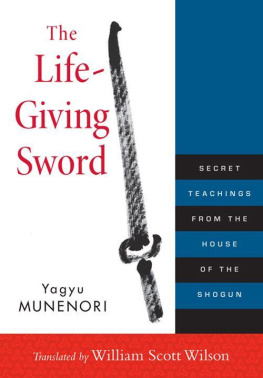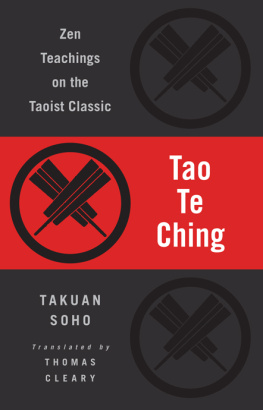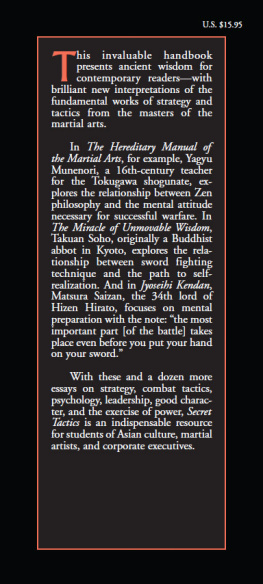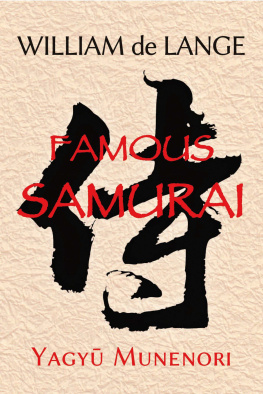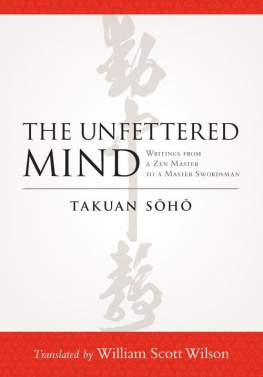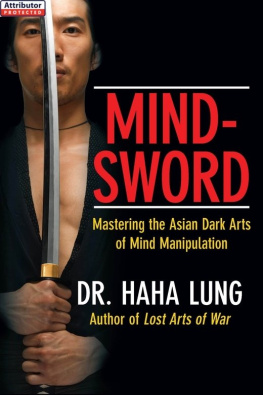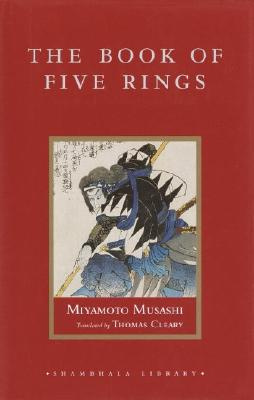ABOUT THE BOOK
The legendary seventeenth-century swordsman Yagyu Munenori was the sword instructor and military and political adviser to two shogunsand was a rival to the great Miyamoto Musashi. Despite his martial ability and his political power, Munenori spent his life immersed in Zen teachings and practice. These teachings formed the framework for his deeply spiritual approach to sword fighting; Munenori saw in the practice of the sword a way to transform the student into a total human being. The Life-Giving Sword is Munenoris manifesto on his approach. His central themes are the Life-Giving Swordthe idea of controlling ones opponent by spiritual readiness to fight rather than by actual fightingand No Sword, which is the idea that the mind must be free of everything, even the sword itself, in order to get to the place of complete mastery. Munenoris ideas are essential reading for martial artists of all kinds and can be applied to business and human relations as well.
William Scott Wilson is the foremost translator into English of traditional Japanese texts on samurai culture. He received BA degrees from DartmouthCollege and the Monterey Institute of Foreign Studies, and an MA in Japanese literary studies from the University of Washington. His best-selling books include The Book of Five Rings , The Unfettered Mind , and The Lone Samurai , a biography of Miyamoto Musashi.
Sign up to learn more about our books and receive special offers from Shambhala Publications.

Or visit us online to sign up at shambhala.com/eshambhala.

THE LIFE-GIVING SWORD
Secret Teachings from the House of the Shogun
Yagyu Munenori
TRANSLATED BY William Scott Wilson

Shambhala
Boston & London
2012

THIS TRANSLATION IS DEDICATED TO JOHN PINKERTON SISCOE

Note: Throughout this volume, Japanese names appear in the traditional order, surname preceding given name.
Frontispiece: Samurai (Bushi), from the series Ten Kinds of People (detail). Photograph 2012 Museum of Fine Arts, Boston.
Shambhala Publications, Inc.
Horticultural Hall
300 Massachusetts Avenue
Boston, Massachusetts 02115
www.shambhala.com
2003 by William Scott Wilson
Cover art: Zen Sword by Tesshu. Reproduced by permission of Kaeru-An. Photograph by Felix Hess.
Cover design: Deborah Hodgdon
Photographs of the Illustrated Catalog of the Shinkage-Ryu Martial Arts
2003 by Hozanji Temple and Nara Womens University Library
All rights reserved. No part of this book may be reproduced in any form or by any means, electronic or mechanical, including photocopying, recording, or by any information storage and retrieval system, without permission in writing from the publisher.
Library of Congress Cataloging-in-Publication Data
Yagyu, Munenori, 15711646.
[Hyoho kadensho. English]
The life-giving sword: secret teachings from the house of the Shogun.
Yagyu Munenori / translated by William Scott Wilson.
p. cm.
Includes bibliographical references.
eISBN 978-0-8348-2812-4
ISBN 978-1-59030-990-2 (pbk.)
1. SwordplayJapanPhilosophyEarly works to 1800. 2. Military art and scienceJapanEarly works to 1800. I. Wilson, William Scott,
1944 II. Title.
U101.Y3413 2012
796.86dc23
2012017267
CONTENTS
PUBLISHERS NOTE
This book contains several Japanese characters. If you encounter difficulty displaying these characters, please set your e-reader device to publisher defaults (if available) or to an alternate font.
I n the storehouse of a temple called the Hotokuji, there is a wooden statue of a man in his sixties or seventies seated in the classic posture of knees out and feet drawn together. The lacquer coloring of his robes has chipped here and there indicating the age of the statue, but the overall impression is one of a character both robust and intense. The mans neck is remarkably thick, indicating excellent health, and his eyes show intelligence and deep introspection. His lips, under a thin moustache, are full, and seem ready to give expression to his thoughts. The hilt of a sword appears almost as an afterthought at his left. All in all, this is a man to be reckoned with, inspiring not exactly fear, but great respect from his implicit authority and knowledge.
Somewhere there is a hard edge to his personality; and somewhere, in no particular place, a sense of suppressed wistfulness.
In the early years of the Edo period (16031868), a time of intense development of the martial arts, there appeared three short treatises on swordsmanship that would be influential far beyond the promise of their few pages.
The first was The Mysterious Record of Unmoving Wisdom ( Fudochi shinmyoroku ), written by Zen priest Takuan Soho in about 1632. This was primarily a philosophical piece looking at swordsmanship from the perspective of Zen Buddhism, especially emphasizing the desirability of keeping the mind free from attachment and fixation. In terms of combat, this meant keeping the mind from stopping, or abiding anywherewhether the stance, technique, the opponents sword, or anything that would keep your mind from moving freely. To stop the mind, Takuan declared, would mean defeat.
Although he came from a samurai family himself, Takuan may have been aided in his understanding of the martial arts by swordsman-artist Miyamoto Musashi. In 1629, Takuan had been exiled to the far northern province of Dewa for his public disagreement with a Tokugawa government policy on the rights of ecclesiastical succession. In Dewa he was put under the charge of the local daimyo, Lord Matsudaira. In 1631, Musashi visited the same area to exhibit his style with the sword at the invitation of a certain Matsudaira Dewa no kami. If this was indeed the same daimyo, there can be little doubt that the lord would have introduced the two talented men and enjoyed a night or perhaps a few days of discussion and perhaps even a demonstration of the application of Zen to swordsmanship. Strong similarities in the fundamental assumptions held by Takuan and Musashi vis--vis the art of combat would seem to confirm this meeting, if not in Dewa, then perhaps elsewhere.
The second influential book (the third chronologically) was Musashis own work, The Book of Five Rings ( Gorin no sho ), written between 1643 and 1645. Unlike Takuans philosophical treatise, Musashis book took a practical approach to swordsmanship, informing the reader of such tactics as how to move the feet, where to stand in terms of the sun or other light sources, and how to parry and thrust. The point of entering into confrontation, according to Musashi, was not to die with ones weapon at ones side or employed in a flashy but ineffective technique, but to win. The underlying frame of mind of the art, however, was just as important to Musashi as to Takuan, and this was to set the mind free, never allowing it to stop, even after the opponent seemed to be defeated.
This undeterred, continually moving mind is artistically and philosophically symbolized by the Buddhist avatar Fudo Myo-o (Unmoving Brightness King), often depicted holding in one hand a sword that he uses to cut through our ignorance and in the other a rope to tie up our passions; with these he sets our True Mind free. It is perhaps not a coincidence that Takuan dedicated a part of his work to the description of Fudo, while Musashi, an accomplished artist, sculpted an astonishing statue of this Buddhist inspiration that still fills the observer with awe.
Next page
